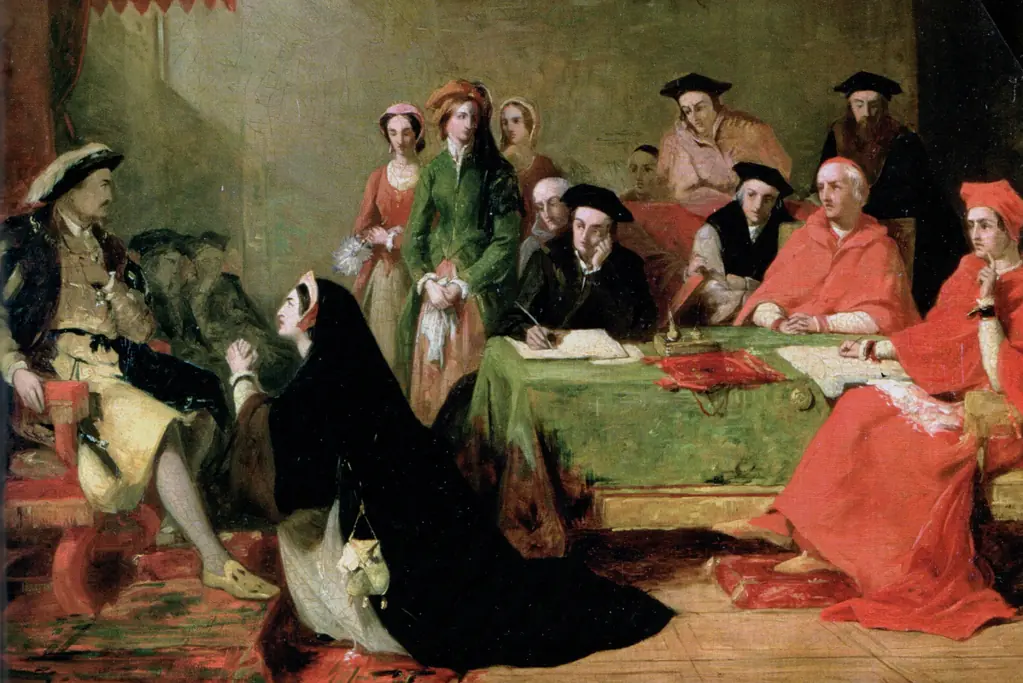
The 6 wives of Henry VIII have captured the imagination of people for centuries, their lives and fates intertwined with one of the most iconic monarchs in English history.
From the tragic tale of Catherine of Aragon to the scandalous downfall of Anne Boleyn, and the brief but significant reign of Jane Seymour, these women played crucial roles in shaping the political and religious landscape of 16th-century England.
In this blog post, we’ll take a closer look at each of Henry VIII’s six wives, exploring their unique stories and the impact they had on the king and the country he ruled.
Before we dive into the detailed stories of each queen, let’s first get our bearings with a comprehensive overview of all six wives, their reigns, and their ultimate fates.
This quick reference will serve as your guide through the complex timeline and help you keep track of the key details as we explore each woman’s remarkable story in depth.
The Details: The 6 Wives of Henry VIII
Henry VIII, the king whose name is synonymous with the very concept of royal matrimony, is renowned for his six marriages, each of which left an indelible mark on the tapestry of English history.
These unions not only shaped the king’s personal life but also had far-reaching consequences for the monarchy and the Church of England.
The 6 wives of Henry VIII were not mere footnotes in his reign; they were active participants in the unfolding drama of the Tudor era.
From the first queen, Catherine of Aragon, to the last, Catherine Parr, each of these remarkable women played a unique role in the king’s life and the destiny of the nation.
So, let us embark on a journey through the lives and legacies of these six extraordinary women, starting with the indomitable Catherine of Aragon, as we unravel the complex web of love, power, and faith that not only defined Henry’s reign but also shaped the very story of the kings and queens of England.
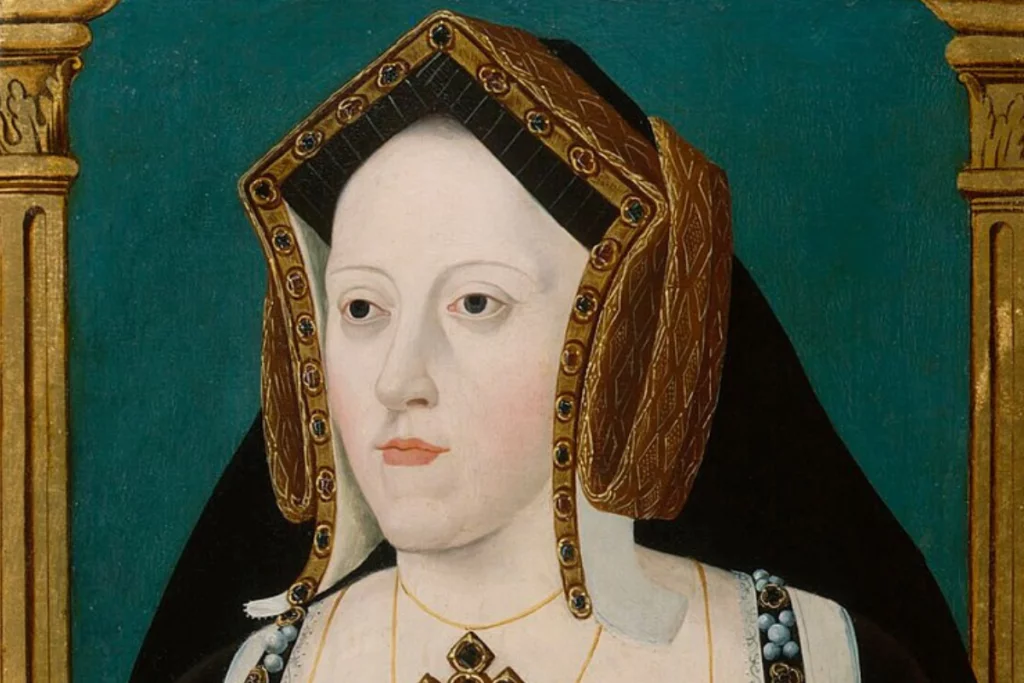
1. Catherine of Aragon (1485-1536)
Catherine of Aragon, the first of the 6 wives of Henry VIII, married the king in 1509 after the death of his elder brother, Arthur, to whom she was initially married.
Despite being married for over 20 years, Catherine was unable to produce a male heir for Henry VIII, which led to growing tension in their relationship.
Henry VIII sought an annulment of his marriage to Catherine, citing that the union was invalid due to her previous marriage to his brother. This decision set in motion the events that led to the English Reformation.
After the annulment, Catherine lived in exile and died in 1536, still considering herself the rightful Queen of England and one of the 6 wives of Henry VIII.

2. Anne Boleyn (1501-1536)
Anne Boleyn, the second of the 6 wives of Henry VIII, captured the king’s heart while serving as a lady-in-waiting to Queen Catherine.
Anne’s influence on Henry VIII played a significant role in the English Reformation, as the king broke away from the Roman Catholic Church to marry her.
In 1533, Anne gave birth to Elizabeth I, the future queen of England, but failed to provide Henry with the desired male heir.
Accused of adultery, incest, and treason, Anne Boleyn was arrested and imprisoned in the Tower of London.
In May 1536, Anne, one of the 6 wives of Henry VIII, was executed by beheading on the grounds of the Tower.
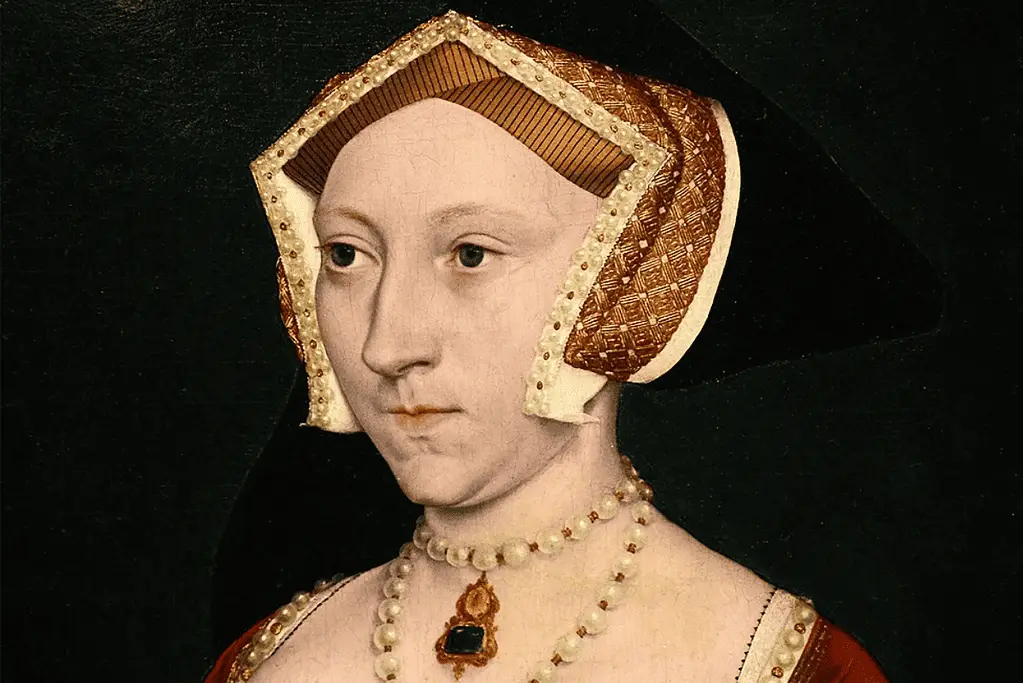
3. Jane Seymour (1508-1537)
Jane Seymour became the third wife of Henry VIII just eleven days after the execution of Anne Boleyn, making her one of the 6 wives of Henry VIII.
In October 1537, Jane gave birth to the long-awaited male heir, Prince Edward (later King Edward VI), fulfilling her primary duty as queen.
Tragically, Jane Seymour died just twelve days after giving birth due to complications from childbirth, leaving Henry VIII devastated and once again without a queen.
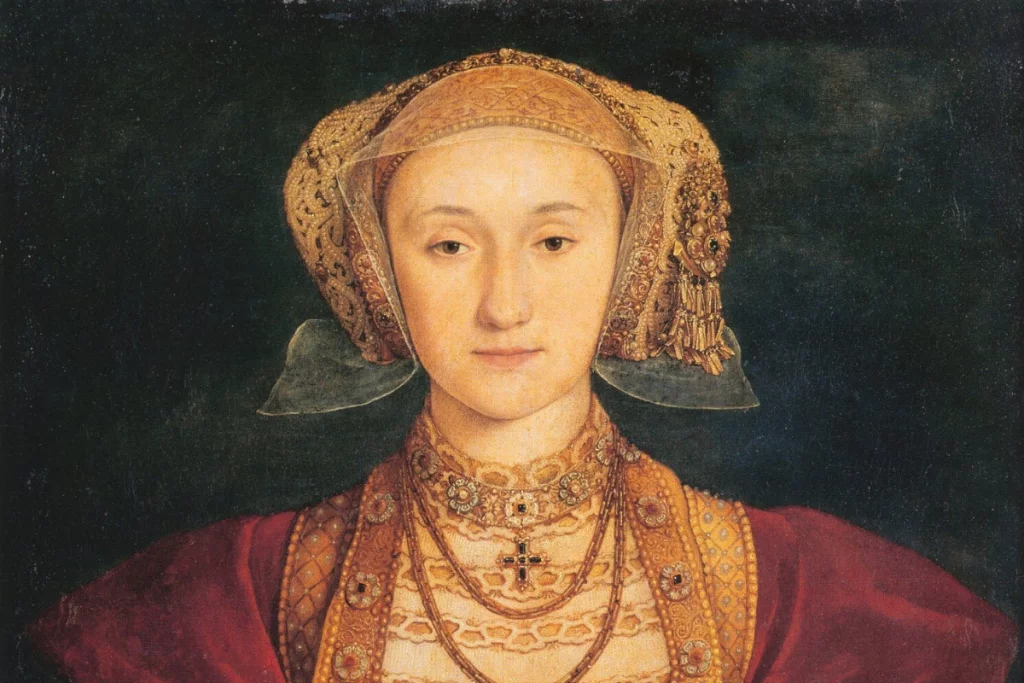
4. Anne of Cleves (1515-1557)
Anne of Cleves, the fourth of the 6 wives of Henry VIII, was chosen as a bride for the king through an arranged marriage to forge a political alliance with her Protestant brother, the Duke of Cleves.
Upon meeting Anne, Henry VIII was dissatisfied with her appearance and found her lacking in the sophistication he desired in a queen.
The marriage between Henry VIII and Anne of Cleves was never consummated and was annulled just six months after the wedding, with Anne agreeing to the annulment in exchange for a generous settlement.
Anne of Cleves, one of the 6 wives of Henry VIII, remained in England after the annulment and enjoyed a cordial relationship with the king and his children until her death in 1557.

5. Catherine Howard (1523-1542)
Catherine Howard, the fifth and youngest of the 6 wives of Henry VIII, married the king in 1540, just weeks after his annulment from Anne of Cleves.
Rumors of Catherine’s infidelity and pre-marital sexual relationships began to circulate at court, leading to an investigation into her past conduct.
Found guilty of adultery and treason, Catherine Howard, one of the 6 wives of Henry VIII, was executed in the Tower of London in February 1542.
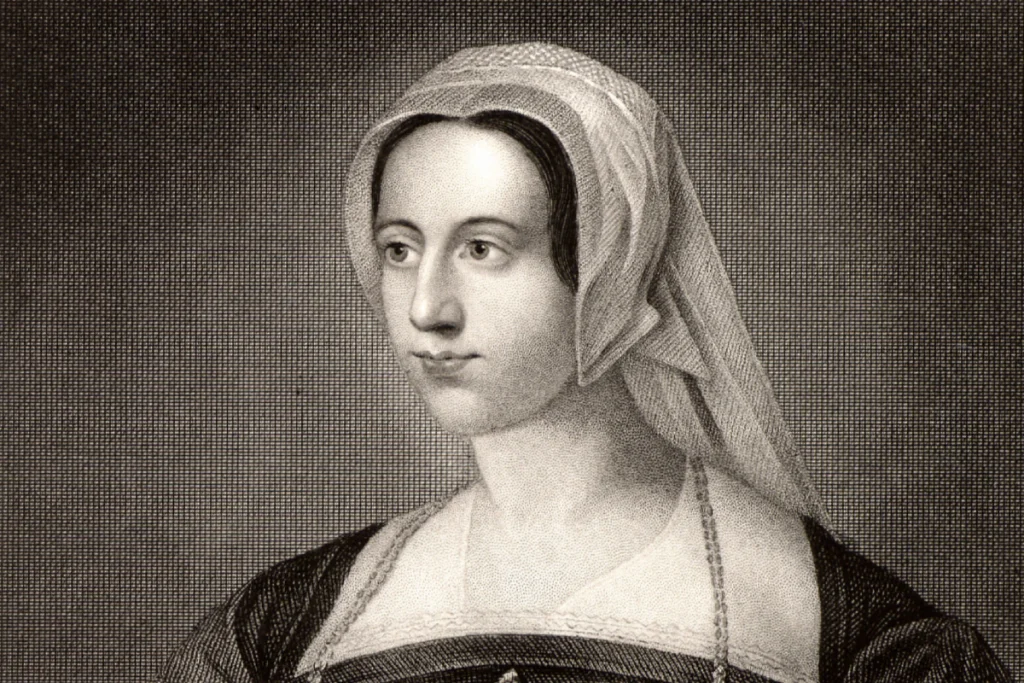
6. Catherine Parr (1512-1548)
Catherine Parr, the sixth and final wife of Henry VIII, married the king in 1543, becoming the last of the 6 wives of Henry VIII.
As queen, Catherine played a crucial role in reconciling Henry VIII with his daughters, Mary and Elizabeth, and acted as a loving stepmother to all three of the king’s children.
Catherine’s influence on Henry VIII’s religious views helped to steer him towards a more moderate religious policy during the later years of his reign.
After Henry VIII’s death in 1547, Catherine Parr, the last of the 6 wives of Henry VIII, married Thomas Seymour, the brother of the late Queen Jane, but died in childbirth the following year.
Now that you’ve explored the detailed stories of all six wives, you might find it helpful to have all this fascinating historical information organized in one place.
We’ve created a comprehensive historical reference guide that brings together the key biographical details, family backgrounds, dramatic conflicts, and historical significance of both Henry VIII and each of his wives in an easy-to-reference format.
This detailed information sheet includes timeline data, personality insights, and the complex political and religious drama that shaped each marriage—perfect for students, history enthusiasts, or anyone who wants to keep this wealth of Tudor history at their fingertips.
Print it out or save it for future reference as you continue exploring this captivating period in English history.
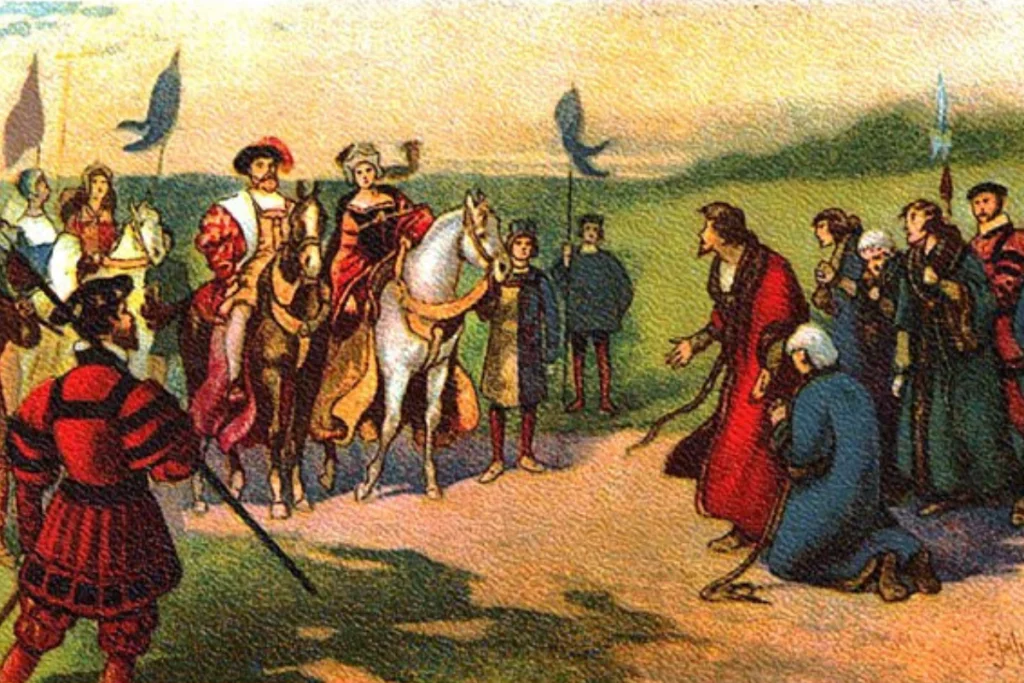
Wrap-up: The 6 Wives of Henry VIII
In conclusion, the stories of the 6 wives of Henry VIII offer a fascinating glimpse into the personal and political intrigues of the Tudor court.
Each of these women, from the steadfast Catherine of Aragon to the influential Catherine Parr, played a significant role in shaping the reign of one of England’s most famous monarchs.
Through their triumphs and tragedies, the 6 wives of Henry VIII left an indelible mark on history.
Their experiences shed light on the precarious nature of life as a queen in the 16th century, where one’s fate could change in an instant based on the whims of a powerful and capricious king.
By examining the lives and legacies of these remarkable women, we gain a deeper understanding of the complex interplay between love, power, and religion that defined the Tudor era.
Their stories continue to captivate audiences centuries later, serving as a testament to the enduring fascination with one of the most dramatic chapters in English history.
As we reflect on the fates of Henry VIII’s 6 wives, we are reminded of the incredible resilience and strength that each of these women possessed in the face of unimaginable challenges.
Whether they faced exile, execution, or the trials of childbirth, the 6 wives of Henry VIII left an indelible mark on the course of English history, and their legacies continue to inspire and intrigue us to this day.
For more on Henry VIII, check out my article Bluff King Hal: 10 Intriguing Facts About Henry VIII of England, and for his famous daughter Tudor Titan: 10 Interesting Facts About Queen Elizabeth I, the final Tudor monarch, and one of the longest reigning and most successful in English history.
of Edward VI (Henry VIII’s only male heir) but Edward’s sister Mary Tudor had other ideas
Reader Resources:
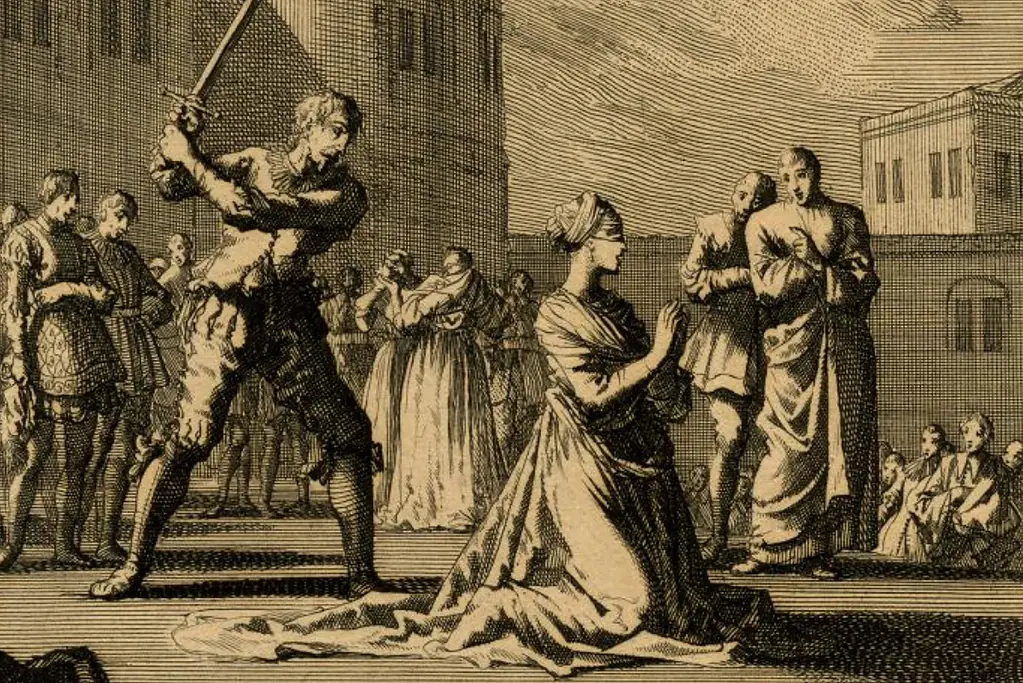
FAQs: The 6 Wives of Henry VIII
While Henry VIII’s feelings towards his wives fluctuated over time, many historians believe that his third wife, Jane Seymour, was his favorite.
Henry’s love for Jane is evidenced by several factors:
Unlike his previous wives, Henry never expressed any dissatisfaction with Jane or considered annulling their marriage.
Jane gave birth to Henry’s long-awaited male heir, Prince Edward (later King Edward VI), which greatly pleased the king and secured her position.
When Jane died shortly after childbirth, Henry was deeply grieved and ordered a grand funeral for her. He had her buried in St. George’s Chapel at Windsor Castle, where he would later be buried next to her.
Henry remained single for three years after Jane’s death, the longest period between any of his marriages.
In later life, Henry allegedly referred to Jane as his “true wife,” suggesting that she held a special place in his heart.
However, it is important to note that Henry’s relationships with his wives were complex and changed over time.
While Jane Seymour may have been his favorite in the sense that she provided him with a son and he never turned against her, his feelings for his other wives, particularly Catherine of Aragon and Anne Boleyn, were also significant in shaping his reign and the course of English history.
The question of Anne Boleyn’s innocence is a matter of ongoing historical debate, and there is no definitive consensus among scholars.
Many historians argue that the charges against her were likely fabricated or exaggerated, and that she was a victim of political maneuvering and Henry VIII’s desire to marry Jane Seymour.
Here are some reasons why some historians believe Anne Boleyn may have been innocent:
Lack of evidence: The charges against Anne, including adultery, incest, and treason, were based on flimsy evidence and contradictory testimonies.
No concrete proof was presented to support these accusations.
Political motivations: Anne’s downfall coincided with Henry VIII’s growing interest in Jane Seymour and his desire for a male heir.
Some historians argue that the charges against Anne were a convenient way to get rid of her and make way for a new queen.
Inconsistencies in the legal process: Anne’s trial was conducted hastily, and she was not allowed to present a proper defense.
The legal proceedings were characterized by irregularities and a lack of due process.
Anne’s strong denial: Until her execution, Anne maintained her innocence and denied all charges against her.
Her unwavering stance, even in the face of death, has led some historians to believe in her innocence.
However, it is important to note that other historians argue that Anne Boleyn may have been guilty of at least some of the charges leveled against her.
They point to her unpopularity at court, her strong personality, and the complex political rivalries of the time as factors that could have contributed to her downfall.
Ultimately, the truth about Anne Boleyn’s innocence or guilt remains a mystery, and the debate among historians continues to this day.
The lack of conclusive evidence and the complex political context of her time make it difficult to arrive at a definitive answer.
Edward VI, the long-awaited male heir of Henry VIII and his third wife, Jane Seymour, was born on October 12, 1537.
He became king at the age of nine upon his father’s death in 1547.
However, his reign was short-lived and marked by political instability and religious turmoil.
Key points about Edward VI’s life and reign:
Edward was a frail child with a history of illness. He was raised as a devout Protestant and received a rigorous education befitting a future king.
During his minority, England was governed by a Council of Regency, first led by his uncle, Edward Seymour, Duke of Somerset, and later by John Dudley, Duke of Northumberland.
Under the influence of his Protestant advisors, Edward VI continued the religious reforms begun by his father, moving the Church of England in an increasingly Protestant direction.
Edward’s reign saw the introduction of the Book of Common Prayer and the Forty-Two Articles, which laid the foundation for the Church of England’s doctrinal position.
In 1553, at the age of 15, Edward VI fell seriously ill, likely with tuberculosis.
As his health deteriorated, he was persuaded by the Duke of Northumberland to alter the succession in favor of Northumberland’s daughter-in-law, Lady Jane Grey, in an attempt to prevent the accession of Edward’s Catholic half-sister, Mary.
Edward VI died on July 6, 1553, at the age of 15.
His death sparked a brief succession crisis, as Lady Jane Grey was proclaimed queen.
However, she was deposed after just nine days by Mary, who had widespread popular support.
Edward VI’s short reign was marked by significant religious changes and political maneuvering, but his early death left the succession uncertain and paved the way for the tumultuous reigns of his half-sisters, Mary I and Elizabeth I.
References: The 6 Wives of Henry VIII
“5 Fascinating Facts about the Queen Who Survived | Sudeley Castle.” Sudeley Castle & Gardens, sudeleycastle.co.uk/news/5-fascinating-facts-about-the-queen-who-survived.
“Catherine Howard.” Historic Royal Palaces, www.hrp.org.uk/hampton-court-palace/history-and-stories/catherine-howard/.
“Coffin Break – the Dramatic Afterlife of Katharine Parr.” Historic UK, www.historic-uk.com/HistoryUK/HistoryofEngland/Dramatic-Afterlife-Katherine-Parr/.
Historic Royal Palaces. “Anne Boleyn.” Historic Royal Palaces, Historic Royal Palaces, 2017, www.hrp.org.uk/tower-of-london/history-and-stories/anne-boleyn/.
“In Profile: Jane Seymour.” HistoryExtra, www.historyextra.com/period/tudor/kings-and-queens-in-profile-jane-seymour/.
“Jane Seymour.” Historic Royal Palaces, www.hrp.org.uk/hampton-court-palace/history-and-stories/jane-seymour/.
“King Henry VIII and His Six Wives: Fact Sheet.” Historic Royal Palaces, www.hrp.org.uk/schools/learning-resources/king-henry-viii-and-his-six-wives-fact-sheet/.
pixeltocode.uk, PixelToCode. “Anne of Cleves, 4th Wife of Henry VIII.” Westminster Abbey, www.westminster-abbey.org/abbey-commemorations/royals/anne-of-cleves-4th-wife-of-henry-viii.
The Editors of Encyclopedia Britannica. “Catherine of Aragon | Biography & Facts.” Encyclopædia Britannica, 3 Jan. 2019, www.britannica.com/biography/Catherine-of-Aragon.
